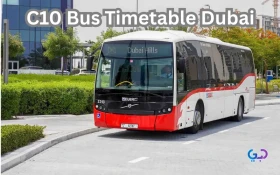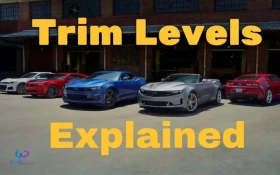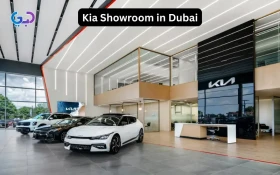Everything About Burj Nahar Intersection 2
Dubai has become associated with high-rise buildings, shiny malls, and futuristic infrastructure, but there is a parallel universe hidden in the city's older quarters—not with the glitz but rather with understated beauty. Among the prime attractions to check out is the Burj Nahar intersection 2, which is located in Al Naif, Deira. It is historically and culturally rich, and a crowded section of Dubai and is still one of the main commercial and cultural hubs of the city.
Even though it may not be as visually stunning as Sheikh Zayed Road or Downtown Dubai, Burj Nahar Intersection 2 is essential in the daily commute of thousands of traders and local people. It is not only an intersection of streets, but also of heritage, practicality, and accessibility, merging the past with the present in the urban ecosystem of Dubai.
Excellent Placement & Quick Arrival
Burj Nahar Intersection 2 is located at a very important crossroads of traffic and communities at the intersection of Salahuddin Road and Naif Road. It was named after the Burj Nahar Tower, one of the three 19-century watchtowers rising in the city to protect it from the thoughts of foreign invaders. This nearby watchtower, which has now been preserved, is a popular tourist attraction for those interested in Dubai's history.
Burj Nahar Intersection 2 Links:
-
Omar Bin Al Khattab Road
-
Al Khaleej Road (D92), the road that goes alongside the coast
-
Al Maktoum Road that bends towards The Union Square and Deira Clocktower.
This place can be viewed as a bridge connecting Old Dubai and its new districts with the help of:
-
Deira City Centre
-
Gold Souk and Spice Souk
-
Dubai Creek and Al Seef
As for public transport, people do not have to worry as they have many choices. The intersection is close to Salah Al Din Metro Station, Gold Souk Metro Station, and Union Metro Station along with both Red and Green Metro Lines. Besides, buses, taxis, and even traditional abras (water taxis) on the nearby creek make this a multi-modal transport zone.
Vehicle Movement and City Vibe
Being strategically placed, Burj Nahar Intersection 2 has busy traffic coming from all directions at all times. Private vehicles, delivery trucks, buses, and pedestrians are constantly in motion from early morning to late night. To control the traffic flow in this high-pressure sector, the Dubai Roads and Transport Authority [RTA] has deployed various systems of urban traffic management.
The junction has:
-
Smart traffic signals that use AI to sense the vehicles
-
Roundabouts and slip roads to ease the turn direction
-
Lane segregation and traffic markings to prevent obstructions
-
Pedestrian wait zones and crossing lights for foot traffic
During seasonal sales and Ramadan nights, this intersection is of a prime importance, as it is close to the busy markets and retail districts. Urban architects have constructed the layout in such a way as to have a double effect, despite congestion. You can locate the detours through secondary streets when it is peak time.
Nearby Residential & Commercial Grounds
The urban regions that surround Burj Nahar Intersection 2 manifest the multiculturalism of Dubai. They are full of diverse communities where mid-rise apartments, family-owned local businesses, and all are placed among narrow lanes. The intersection is bordered by neighborhoods like Naif, Al Murar, and Hor Al Anz.
Residential Amenities:
-
1, 2, and 3-room apartments within the range of an average family's budget
-
Family buildings with nearby grocery stores
-
Availability of mosques, salons, clinics, and pharmacies
-
Commercial and Business Facilities:
-
Textile wholesalers and electronics markets
-
Tailoring shops, travel agencies, and shipping companies
-
24/7 convenience stores, eateries, and street vendors
-
Gold and spice traders, particularly near the Gold Souk
You can see the city's true spirit here, like shopping, bargaining, delivering goods, or just relaxing over a cup of karak chai on a sidewalk bench.
Infrastructure Upgrades
Dubai Municipality and RTA are actively engaged in enhancing infrastructure at Burj Nahar Intersection 2 and surrounding areas. Some of these changes might not be easily observable to a passerby but, they are made to assure a safer and efficient transit for all users.
New and future improvements will be:
-
Pedestrian walkways will be more accessible with tactile paving to assist visually impaired people
-
Traffic signals based on LED for enhanced visibility at night
-
Drainage system refurbishing for waterlogging prevention during rare rains
-
Parking meters and ticketing machines installed smartly in nearby commercial blocks
-
Greener areas and shaded rest spots added as part of urban beautification
This junction is a priority area within the 2040 Urban Master Plan, which concentrates on sustainability, walkability, and smart cities.
Pedestrian safety and accessibility
One of the most remarkable features of this junction is how well it is able to cater for pedestrians by providing a safe environment in such a dense traffic footing area.
Walkability is supported by:
-
Multiple pedestrian crossings at traffic lights
-
Adjusted medians and waiting islands
-
Dedicated bike lane
-
Ramps with a wheelchair-friendly design
-
CCTV-monitored traffic zones for security
Hundreds of people walk this stretch daily as schools, shopping enclaves, and metro stations are conveniently close. It is made for human mobility, not just for vehicles it has to transit.
Obstacles Faced by Travelers
As a highly urban area, Burj Nahar Intersection 2, like any other junction, has some downsides:
-
Congestion during rush hours, especially between 5:30 PM and 8:00 PM
-
Limited parking availability, often resulting in drivers using paid lots or underground garages
-
New drivers may have some confusion sometimes due to narrow streets for connecting and U-turn options
However, RTA’s careful monitoring, enhanced signal timing, and the presence of traffic officers at peak times smooth these problems.
Foresight and Urban Role
Intersections, being the junction points of many roads, are going to be the vital points of the city. They are becoming not just the places where the roads meet but the points of connection, public safety, and sustainability of urban living.
AI can be brought to the site as:
-
AI-powered traffic regulation that adapts on real-time
-
E-vehicle charging stations near parking zones
-
Digitally integrated pedestrian signage
-
Interactive maps and QR-based wayfinding
Such advancements target a cleaner, stronger, and more efficient city for the people, visitors, and industries.
Conclusion
Burj Nahar Intersection 2 may appear to be just an ordinary junction but it is in fact a key component of the urban logic of Dubai. It is a passage of heritage to progress, from old neighborhoods to new developments, and a vivid example of how cities evolve while still keeping history intact.
If you are in Deira, this intersection is most likely along your way; you can happen upon this while walking in the souks, catching a metro, shopping for fabrics, or even strolling in Old Dubai through the crossroad.




















